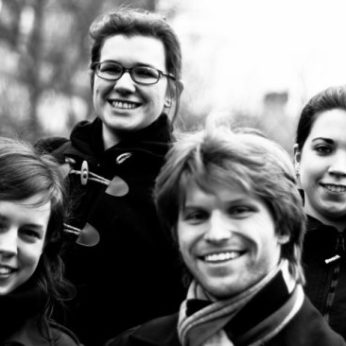Joseph Haydn was born in the village of Rohrau on the Hungarian border, the son of a wheelwright. He trained at the choir school of St Stephen’s Cathedral in Vienna from the age of eight until his voice broke. For eight years after that he eked out a miserable existence as a jobbing musician and composer, before he got his first permanent post as Kapellmeister. In 1761 he became vice-Kapellmeister to one of the richest men in the Empire, Prince Paul Anton Esterházy, and in 1766 he became Kapellmeister, a post he retained for the rest of his life.
Hans Keller claims that on a conservative count Haydn wrote forty-five profound and profoundly different, absolutely flawless, consistently original master quartets, each a violent, multi-dimensional contrast to any of the others. This calculation excludes the early divertimentos, which Haydn included in his listing of 83 quartets. No other quartet composer can begin to compare with this comprehensive testament.
Opus 54 is the first half of a set of six quartets dedicated to the violinist Johann Tost, who led the second violins in Haydn’s orchestra at Esterháza from 1783 until his departure for Paris in 1788. If we judge by the quartets Haydn wrote for him, he must have been an exceptional musician. By all accounts he was also a bit of a chancer, dreaming up a number of dubious schemes for cashing in on other people’s work. But both Spohr and Mozart also wrote quartets for him, so he was clearly not just any old fiddler with a fertile imagination.
This is the third of Haydn’s great C major quartets, and it must rank as one of his most original works, certainly the one with the most prophetic innovations. The asymmetrical opening tells us immediately that we are in for an inventive journey, especially as all harmonic expectations are immediately confounded. The second subject is played piano dolce in contrast to the assertive masculinity of the first, though both of them make great play of the shortest possible motifs. The profound passacaglia-like slow movement calls out for improvised shadings of the theme in order to intensify and deepen the music’s impact. This leads without a break into the minuet and trio.
The finale has Haydn breaking even more new ground. Music history credits the big nineteenth century symphonists, such as Mahler and Tchaikovsky, with the discovery of the adagio finale, but here we have Haydn with the fully-fledged idea. He even tries to pretend that it is just a slow introduction, if a rather long one, by inserting a conventional presto where we might expect the main body of the movement to appear. However, this quickly stutters to a halt and the adagio returns and we realise that the presto was the central section of a ternary form slow movement. As in the first slow movement the first violin is given a profusely ornate melody movingly contrasted with the simple, deep-breathed part in the cello. A quartet to treasure.
